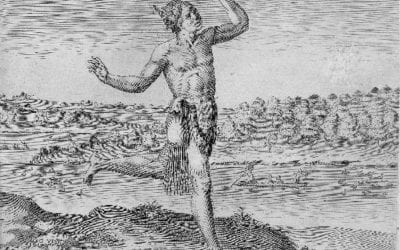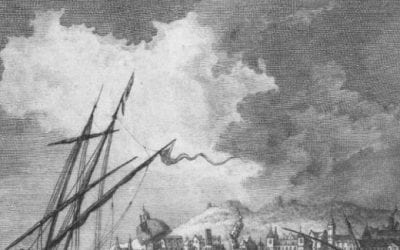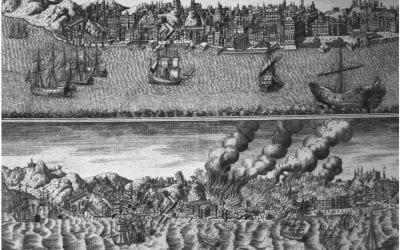Hurricane Mitch: a View from the Ground
We had spent the past several months reading national and municipal level disaster impact reports, reviewing funding proposals for community reconstruction, and talking to different private and public sector organizations, trying to work out institutional agreements to help fund reconstruction efforts within urban communities displaced by Hurricane Mitch. Holding the satellite maps and aerial photographs we had been given to orient us to what we would find on the ground, members of our team peered out of our airplane windows at the rugged terrain of Honduras’ central and southern mountains and winding Choluteca River directly below. There, through the clouds and fog, were hundreds of potential sites scattered along the hurricane’s path still in need of technical and financial assistance and under consideration.
When Hurricane Mitch hit Honduras in late October 1998, the Choluteca River flooded; its rising waters tearing out and carrying away much of Tegucigalpa’s basic infrastructure, including bridges, homes, factories, hospitals, even prisons. It inundated the downtown business district, sweeping away cars, busses, downed electrical poles, and the entire contents of first-floor stores and residences. But, some of the most wrenching losses were when the water-soaked ground triggered mudslides that left neighborhoods buried. The surrounding highlands were scarred with “devil’s claw marks” where rock and mud slides continued to rework the landscape, burying rural communities and their meager assets. For an almost unimaginable eight days gale force winds, rain, and flooding continued, refusing to disperse or move out to sea again, dumping in that week more rain than averaged per year.
We were one of many NGO teams that arrived that week for an international converence focused on post-disaster reconstruction, attending meetings, touring the city and outskirts, hearing how the hurricane had enveloped the city, flooding the riverbeds, washing away poorer communities. Members of the upper middle class had galvanized in civic groups such as the Rotary Club of Tegucigalpa, building housing, creating hospital and medical equipment banks, re-establishing potable water and sanitation systems, creating scholarships for vocational training, developing community banks and centers. This local advocacy had been fortuitous for the city and region, given that much of the aid promised directly after the disaster never materialized.
Watching international “donors” streaming into Rotary-supported communities such as Nueva Esperanza and other Tegucigalpa projects frustrated Rotary representatives outside the capital. An engineer from San Pedro Sula asked us to witness the terrible situation there. I went to San Pedro Sula with a U.S. doctor on our team, trying to map out this “less impacted area.” We drove by hundreds of makeshift tent encampments, home to families unwilling to go into government settlements. In the formal settlements we recorded the difficulties of camp life, the corruption of local and settlement officials, the fear of cholera, and the growing violence, crime and sense of despair. We left only after one of the camp leaders recommended we go because of holdups perpetrated by local unemployed youth.
The following days were spent visiting more established camps farther from the city. It was during one of these visits and interviews that it happened. I remember hearing the words of the camp leader begin to fade, then the entire community looking down at me and the leader ordering everyone to stand back. I thought I had begun to get a sense of what things looked like on the ground after Mitch, but only now, lying flat on my back, violently ill in the middle of a resettlement camp, coming to consciousness, was I really getting perspective. “It’s the water” said one woman. “You drank the water, didn’t you?” asked our institutional liaison. “You are going to get very sick now” confided one little boy. “Quiet!” reprimanded an old woman, “She doesn’t need to hear that!” They were all right. I was sick, it was the water, and no one needed to tell me what I was in for. Since a big storm was moving in and no flights were available, we decided to take a bus. This was a bad idea. Many others on that bus that night, sick, frustrated and guilty, had also decided to leave and try their luck in the capital.
When we arrived in New England, the decision was made to fund La Nueva Esperanza, where our modest resources would have the greatest impact. Everyone realized that working alone we would be out of our depth in San Pedro Sula. A much larger, stronger network was needed than the one we could provide. We still believed that international civic organizations and small scale philanthropists had a role to play in disaster relief. However, we had to admit that once we ventured onto the quagmire-like ground of post-hurricane reconstruction, we were just as likely as anyone to get bogged down.
Winter 2007, Volume VI, Number 2
Jennifer Burtner is a Lecturer in the Department of Anthropology, Tufts University, and a Research Affiliate and Former Brazilian Studies Coordinator at DRCLAS.
Related Articles
Environmental Stress and Rainmaking
When Europeans first attempted to settle in North America north of the Rio Grande, their confrontations with Indian cultures were marked by cosmic struggles over environmental…
“Bury the dead and feed the living”
“Bury the dead and feed the living.” These were the words attributed to Portugal’s pragmatic, all-powerful first minister, the Marquês de Pombal, as he contemplated the damage wrought by…
The Jesuit and the Jew
Such a Spectacle of Terror and Amazement, as well as the Desolation to Beholders, as perhaps had not been equalled from the Foundation of the World.” Thus an English merchant writing…




